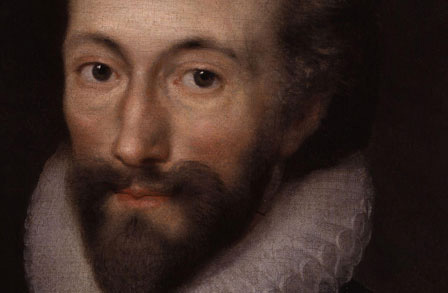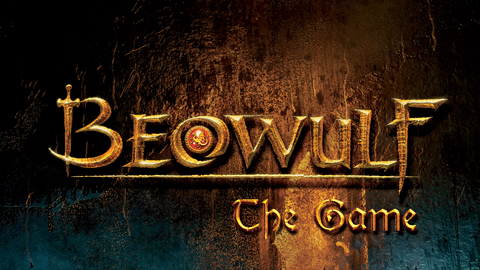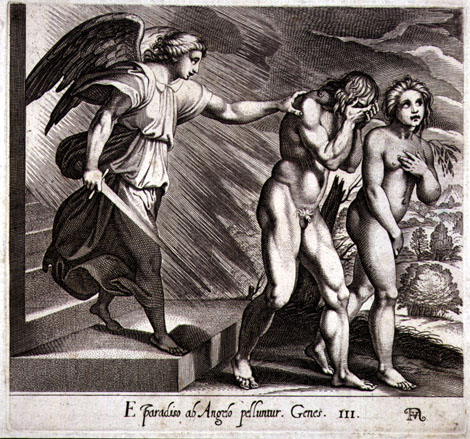The English Drama is catholic in origin as it is in the Church and its liturgy that we find the stimulus which led to the rapid rise of native drama in the Middle Ages. The original purpose of Christian drama was to bring forward a sort of living picture book for those to whom the Latin of the liturgy was unintelligible through the Miracle Plays. Gradually the Moralities and Interludes evolved as further advancements which paved the way for the earliest dramas. The stage was set for the proper flourishing of this literary genre in the great Age of Elizabeth.
The Miracle Plays which were based on the Biblical stories and the lives of the saints, had their formal beginnings in the Latin Liturgical enactments of the Church, such as the Quem Quaretis performed on Easter and other Biblical stories from the Old and New Testament. Gradually, the clergy started losing control over the production of these plays, vernacular started usurping Latin as the tool of deliverance, and lay actors began taking the place of clerics as performers. In quest of more space and freedom from church jurisdiction, the organization of these plays shifted from ecclesiastical hands to the trade guilds which were wealthy and keen rivals in a public show. By the 14th century, complete cycles of plays covering the history of the world from the Creation to the Day Of Judgment evolved.
The church’s disapprobation was soon attached to these plays because of the deterioration in their religious significance but in spite of that, these plays flourished as a means of edification and amusement with the development of Town life. The greatest stimulus to the non-liturgical religious drama was provided by the institution of the Feast of Corpus Christi. This feast which was observed in England from 1311, saw each guild staging its play on a pageant wagon through the streets from early morn till the failing of the day-lights. Every town had its cycle of plays, of which only four are extant – a) Chester Cycle b) York Cycle c) Wakefield and d) Coventry. Much appreciated are the York cycle’s Butcher’s Play of crucifixion and Wakefield Second Shepherd’s Play. Stylistically, the plays of these cycles are widely differing. All are predominantly in iambic verse with elaborate metrical patterns and good use of alliteration.
The Morality Plays of the 15th and 16th centuries, which registered a further advance, were allegories cast in the mold of a play. They were partly an independent growth and partly a development of the didactic side of the Miracle Plays. In such plays, virtues and vices were presented on the stage as allegorical creations. Abstractions such as Justice, Mercy, Gluttony, Death, and so on were its commonest characters. The Castle of Perseverance is a spectacle with a cast of thirty-six actors that dramatized humankind’s life from birth to death with a tournament of virtue and vice, where virtue emerged victoriously. Mankind and Everyman showed the lives of representative humans in dialogue with characters such as Fellowship and Good Deeds.
The Interludes, which were the last predecessor of the drama proper, flourished about the middle of the 16th Century. These short plays to be performed between feats or longer plays were marked by their broad farcical humor, and they were the first to introduce set scenes and real characters such as humble citizens and friars. John Heywood’s The four P’s and Johan Johan are some of the best witty interludes which paved the way for regular Elizabethan comedy.
It is in the Miracle Plays, Moralities, and Interludes that we find the first roots of English Drama. In them, we discern vigor, humor, the beauty of feeling, deep sincerity, and a stubborn national personality that promised well for the drama to come. These Middle English plays were the raw materials that lay at the hands of Shakespeare and his contemporaries and after centuries of slow ripening, the harvest of English Drama came in the Age of Elizabeth with wealth and excellence of fruition that is one of the marvels of our literature.
Some online learning platforms provide certifications, while others are designed to simply grow your skills in your personal and professional life. Including Masterclass and Coursera, here are our recommendations for the best online learning platforms you can sign up for today.
The 7 Best Online Learning Platforms of 2022
- Best Overall: Coursera
- Best for Niche Topics: Udemy
- Best for Creative Fields: Skillshare
- Best for Celebrity Lessons: MasterClass
- Best for STEM: EdX
- Best for Career Building: Udacity
- Best for Data Learning: Pluralsight
















